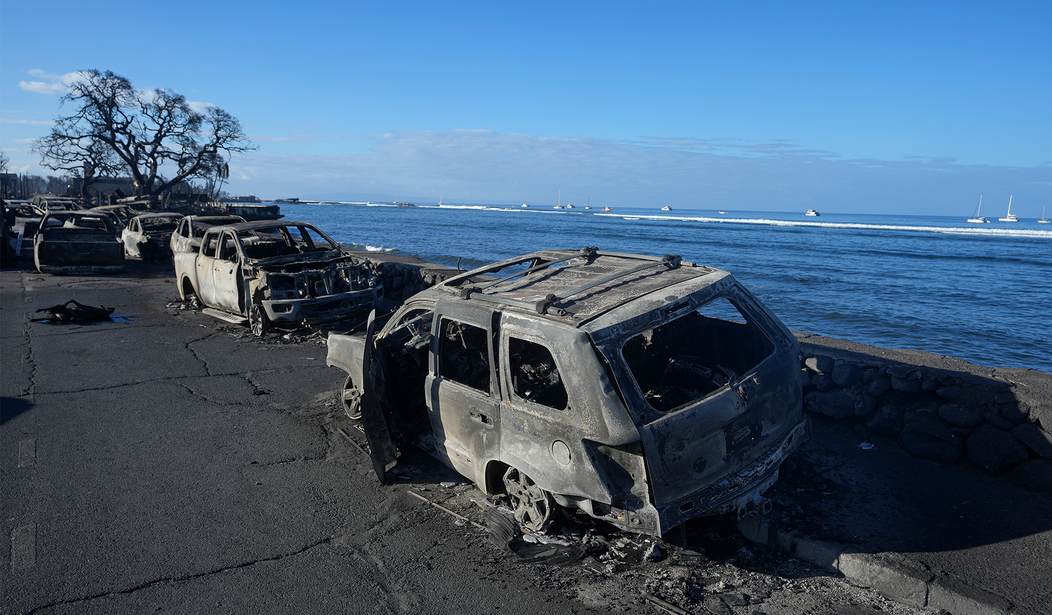Should the second of the principal islands of the Hawaiian chain suddenly have become a flaming tinder-box and death-trap for more than a hundred of its residents?
There are reasons why it did, but climate change is not one of them.
The northwestern part of the island of Maui had once been a premiere agricultural center featuring pineapple plantations and sugar cane fields.
After WWII, its agricultural sector gave way to (non-native) population growth, real-estate development and the tourism industry. Land values skyrocketed, pricing agriculture out of the market. The former fields of Maui converted to home development, close by the shore, with much of the once-cultivated upland slopes transitioned to open grassy fields.
The abandoned native grassland subsequently became colonized by invasive, annual grasses (particularly guinea-grass of African origins). The grass grows prolifically during Hawaii’s wet winter and spring seasons, then typically it dies off by mid-summer and autumn, leaving head-high tinder standing in copious amounts with high fire potential. Grass fires are not unusual in the Islands.
The fire that engulfed the city of Lahaina and others of Maui’s smaller communities, spread rapidly down-slope through open fields of dry grass driven by the easterly trade-winds amplified by the passing of Hurricane Dora.. The fires quickly torched buildings closest to the fire line. As strong, dry winds descend down-slope, they heated (like California’s Santa Ana winds) and further parched already dry grass, accelerating ready ignitions.
Recommended
Officials pointed fingers ex post facto to the principal electric utility as the primary culprit for setting the fires. More likely, downed power lines were not the originating element, but became a secondary factor only after transmission lines and poles burned with the passage of the initial fires. The 60-mph winds from a distant hurricane should not have been sufficient to topple transmission towers.
But once an individual house caught fire, it spread to other nearby structures, and, one after another, buildings in the neighborhood caught fire in rapid succession, like a line of dominoes.
Residents received little advanced warning of the expanding fronts that approached soon after ill-advised bulletins that the main fires were nearly contained. Instead, the fires flared up again and advanced reaching speeds of a mile a minute leaving evacuees little time to escape the flames. A number of persons escaped into the ocean or managed to drive away before the fire engulfed their neighborhood. Media reports suggest that fewer than half the households in the affected areas owned automobiles or other means of escape. Some perished as their cars caught fire in local traffic jams. The charred remnants of those vehicles remain.
It is believed that the originating fires were ignited not by lightning strikes, but from human acts such as discarding lit cigarettes, incinerating trash, etc. But with the prevalence of abundant combustibles, any small burning object dropped into leaves or grass could instantly burst into flames that would expand into an uncontrollable, rapidly moving front.
The limited fire-fighting emergency personnel and equipment on Maui and nearby Hawaii and Oahu lacked sufficient capability to deal with the wildfires as they arose, attested by the repeated flare ups after particular fires were believed to be under control.
Hawaii’s warning systems already in place for volcanic eruptions and tsunamis did not sound an alarm (for reasons not yet adequately explained) so that many residents remained uninformed of the pending danger until a fire front was on top of them. Journalists later interviewed burned-out survivors who report surprise and dismay with having to deal with the emergency thrust on them unawares.
More than 110 deaths have now been confirmed at the time of this writing, with a possible score of additional bodies expected yet to be found in the ashes.
The Maui wildfire is chronicled to be among the worst wildfires in United States history based on the number of known human fatalities, extending back for more than a century.
The final total will certainly fall far short of the massive wildfire that visited the lumbering community of Peshtigo, Wisconsin on October 8, 1871. That fire (described by survivors as a fire-storm) claimed the lives of more than 2,500 residents (some experts estimate as many as 3,000 died) in the three northeastern Wisconsin counties and one county in Michigan's Upper Peninsula. The recent wildfires in California, Oregon and now in Hawaii did not claim nearly as many as died on a horrible Sunday night concurrent with the more widely publicized Great Chicago Fire totaling some 300 deaths.
The national media are once again attempting to connect the Maui wildfire with CO2-driven climate change as an outgrowth and corollary of man-made global warming. The reasoning goes as follows: a warmer climate (warmer than average seasonal temperatures) leads to a drier climate, that in turn contributes to prolonged drought that generates more numerous and severe wildfires.
But the underlying premise is false. A warmer global temperature would necessarily cause more evaporation of ocean surface water, leading to a wetter atmosphere thus generating more precipitation that should tend to restrict episodes of drought. Major circulation patterns that broadly influence the wind direction in weather systems regionally, account for either the presence or absence of drier than normal, wetter than normal or drought across the temperate continents. The equatorial belt tends to be either persistently wet tropical (rain forest), Sahel-like savannah or desert.
Maui’s rainfall patterns vary seasonally and topographically, with the greater portion of its rainfall received during the winter and spring months, mostly falling along its wet windward east and northern exposures. The rainfall tapers off by mid-summer. The recent wildfires began in August when the lush spring growth of the grasslands had died and dried out enough to form abundant tinder, ready to ignite into the wind-driven firestorms that happened on August 8-12.
Wild-fire hazard experts had warned government officials on Maui and in Honolulu of the potential risk of outbreaks of wildfires months and even years before, but as is too often the way within bureaucracies, the warnings were ignored or dismissed as of trivial importance. Timely efforts to mitigate the potential for wildfire were not undertaken.
Not since the unannounced arrival of military aircraft of the Kido Butai (the First Fleet of the Imperial Japanese Navy) on the morning of Sunday, December 7, 1941, have citizens in Hawaii been so rudely awakened by an imminent threat.
William D. Balgord, Ph.D. (geochemistry), heads Environmental & Resources Technology, Inc. in Middleton, Wisc.

























Join the conversation as a VIP Member